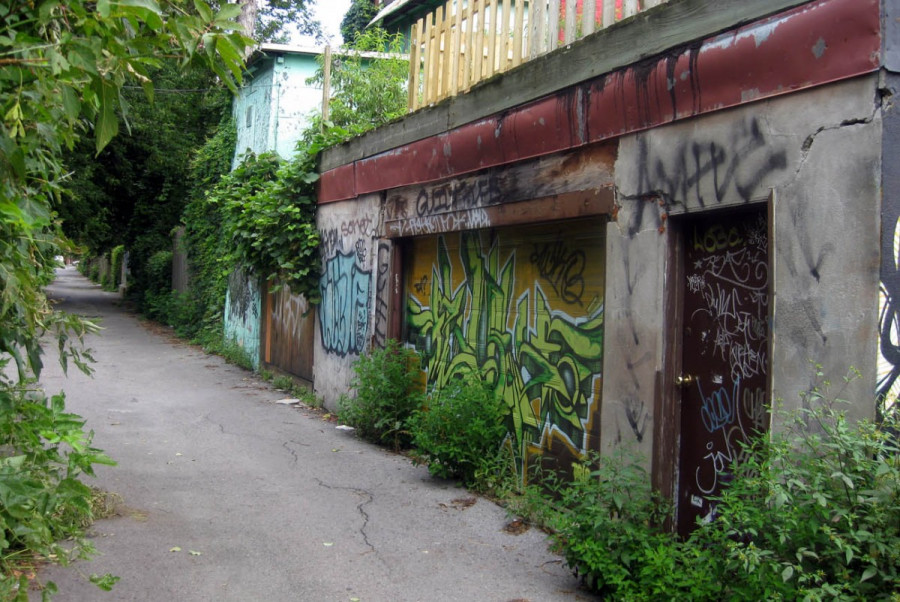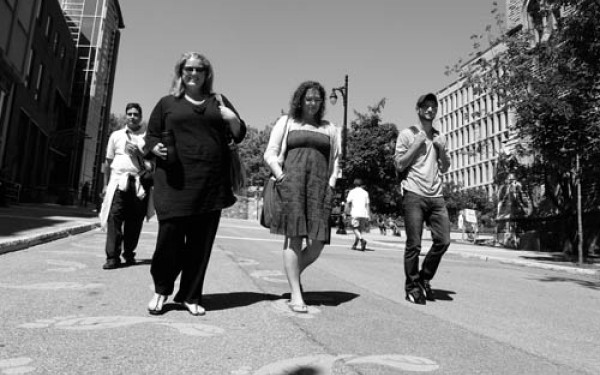Green Streets
Concordia Student Union to Oversee Greening of Montreal’s Alleys
The current state of downtown back lanes—often filled with garbage, broken shards of glass and other debris—is about to change for the residents and merchants of Hawarden Avenue and Souvenir Street. Things are about to get a whole lot greener.
On Aug. 23, the Concordia Student Union appointed two councillors to oversee the funding for the seventh Green Alley project to hit the downtown core.
A project of Éco-quartier Peter McGill—a city-run organization aimed at engaging citizens with their environment and community—the Green Alley was recently given $23,570 of funding from the federal government as part of an Eco Action initiative.“We’re taking advantage of Montreal’s secondary street grid,” said Paul-Antoine Troxler, EQPM Coordinator. “It’s a way of finding a new function for a semi-public space. I say semi-public because it remains public property but [residents] sort of extend their backyards and use it in a community way.”
The Green Alley on Hawarden Avenue will undergo greening at the end of September and early October, digging up 220 square meters of land to plant five trees, 80 shrubs and 600 indigenous perennials. The project should be completed by November.
“You can’t count our project just by the number of trees we plant,” said Troxler of the current Hawarden project. “[We’re here to] help citizens help themselves become more autonomous and accomplish something beyond their own gardens to improve the quality of life,” he added.
“It’s important we don’t forget that people actually live in the heart of the city.”
—Paul-Antoine Troxler,
EQPM coordinator
“Our ultimate goal is to improve city living.”
EQPM hopes to eventually create a biodiversity corridor, or a “green network,” between Mont Royal Avenue and the Lachine Canal in partnership with other Éco-quartiers to the north and south.
Troxler stressed that a constantly changing student and downtown population makes it one of the most “complex and fascinating” neighbourhoods to work with, in terms of communication and upkeep of neighbourhood greening projects.
“Our Guinness World Record is that [this area] has a 70 per cent population change every five years, according to the census,” he said. “We try to work closely with residents and it’s important we don’t forget that people actually live in the heart of the city. We try to supplement residential services, despite having the biggest commercial population.”
The CSU, which provides arms-length accounting oversight for the EQPM, agreed that the Green Alley projects are a step in the right direction.
“We’re basically just checking in, watching their budget […] and keeping track of the financial transparency and seeing where the money is going,” said Morgan Pudwell, VP Sustainability and Promotion. “But it’s a really great initiative to have in the Montreal, especially with the lack of green space in the downtown core.”
Not a dime of student money will go towards the Green Alley project, she added.
After a decade-long partnership with the EQPM, who still consider themselves under the umbrella of the CSU, the Concordia student government has taken a back seat in direct involvement with development projects, despite being a key player for their initiation into the neighbourhood in 1997.
This article originally appeared in Volume 31, Issue 04, published September 7, 2010.




_1_600_375_90_s_c1.jpg)
_900_642_90_600_375_90_s_c1.jpg)
__600_375_90_s_c1.jpg)